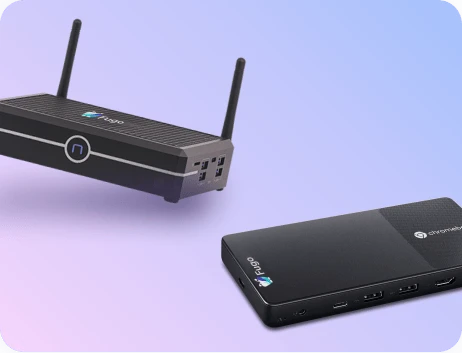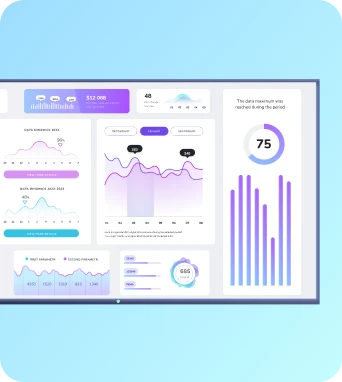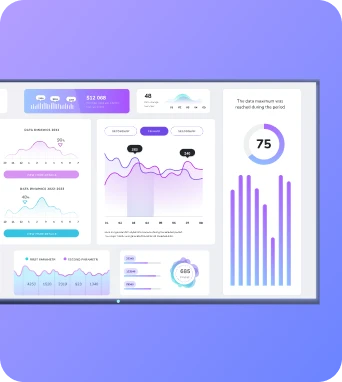Brightness uniformity
Brightness uniformity describes the evenness of luminance across a display, measured as the relative difference between the brightest and darkest areas. It is a practical quality metric for TV dashboards and digital signage that influences readability, perceived colour consistency and the integrity of brand assets across a signage network.
Brightness uniformity
Why brightness uniformity matters
Brightness uniformity matters because viewers judge both content clarity and brand quality by how consistently a display renders luminance and tone. On a TV dashboard used for operational monitoring, uneven brightness can hide critical information at screen edges or create hotspots that draw attention away from priority fields. In retail or reception signage, unevenness undermines colour and contrast, making logos and promotional materials appear patchy, which damages perceived professionalism. Uniformity therefore affects usability, accessibility and brand perception in tangible ways. From a technical perspective, uniformity is typically expressed as a percentage or as a deviation metric comparing maximum and minimum luminance values across a defined grid of measurement points. Common practices include centre-to-corner checks or a nine- or twenty-five-point grid depending on the screen size and accuracy required. Standards and best-practice targets vary by industry and use case: corporate dashboards and wayfinding displays usually tolerate slightly wider variation than colour-critical retail signage, but network managers should still aim for consistent thresholds so content behaves predictably across multiple devices. Environmental factors such as ambient light, viewing angle, and reflections also interact with intrinsic uniformity, meaning that a technically acceptable panel can still appear uneven in situ if mounting, lighting or protective glazing are suboptimal. When diagnosing uniformity issues it is important to separate manufacturing variability from operational degradation. New panels can show visible vignetting or clouding if quality control is poor; older panels commonly exhibit reduced brightness and patchy backlight performance. Understanding the root cause informs whether the right response is calibration, firmware tuning, mechanical adjustment, cleaning, or replacement. For multi-screen networks, establishing a measurement routine and documentation process helps detect gradual drift and plan maintenance before content integrity suffers.
Measuring and improving uniformity
Measuring brightness uniformity starts with choosing the right instrument and a repeatable procedure. A calibrated luminance meter or spectroradiometer is recommended for accuracy; inexpensive light meters can give useful comparative data but may lack the spectral correction needed for precise colour and luminance work. Place the device perpendicular to the screen surface at a consistent distance and measure across a regular grid—common grids include nine points (centre and eight surrounding positions) for small to medium displays, and larger grids for big-format signage. Record the maximum and minimum readings and calculate uniformity as a ratio or percentage: many practitioners use (minimum ÷ maximum) × 100 to express how close the dimmest area is to the brightest. Supplement numerical data with photographed test patterns to document visible artefacts such as clouding or mura. Improving uniformity often requires a mix of calibration, hardware adjustments and content strategies. Start with a full factory reset and run any vendor-provided uniformity or backlight compensation routines. Many professional panels offer local dimming control, zone adjustments or software compensation that can reduce perceived non-uniformity. Calibration using a colourimeter or spectroradiometer and an appropriate profile can harmonise gamma and white point across a fleet, though calibration can’t fix physical backlight failures. For installations, ensure even ambient lighting, avoid direct lighting that causes glare, and verify that mounting frames or bezels are not applying pressure to the panel, which can cause temporary or permanent non-uniformity. Finally, design content with margin-safe areas for critical text and avoid high-contrast gradients that exaggerate slight luminance differences; using templates and a centralised content management system makes it easier to maintain consistent presentation across varied hardware.
Implementing uniformity practices in Fugo
Keep the learning going...
Brightness (nits)
Brightness, expressed in nits, is the measure of a display's luminous intensity per square metre. For digital signage and TV dashboards, nits indicate how well content will remain visible under different ambient lighting conditions, whether mounted indoors near windows or in direct outdoor sunlight.
Brightness adjustment tools
Brightness adjustment tools are combined software and hardware controls that regulate display luminance on digital signage. They manage automatic or manual brightness, respond to ambient light, enable scheduling and power-saving modes, and preserve readability and device longevity across TV dashboards and workplace screens.
BrightSign digital signage
BrightSign digital signage refers to BrightSign's line of dedicated hardware media players and associated OS/software used to deploy, schedule and manage content on screens. Known for reliability, solid-state performance, HTML5 support, interactive features and BrightAuthor/BrightSign Network management, widely used in retail, corporate, transportation and hospitality environments.



